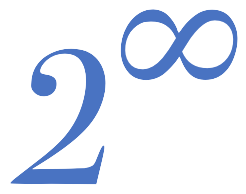Linear Algebra
part 1 of 3
A total of 46 hours of lectures
This is an academic level course for university and college engineering. Due to its size, it is divided into three parts. This page describes the first of those three parts.

Prerequisites
Curriculum
Make sure that you check with your professor what parts of the course you will need for your exam. Such things vary from country to country, from university to university, and they can even vary from year to year at the same university.
Linear Algebra, part 1 of 3
Get the outline
A detailed list of all the lectures in part 1 of the course, including which theorems will be discussed and which problems will be solved. If you are looking for a particular kind of problem or a particular concept, this is where you should look first.

Get Linear Algebra part 1 on Udemy
When you buy the course on Udemy, you get access to it for life. There is just a one-time fee. The prices do vary a lot on Udemy, but if you use our link by clicking on this panel, you will get the best current price. See also our page on “coupon codes” in the menu (the current code is TPOT_APR25).

If I had Hania as my grad school professor – I would have scored a lot higher than I did. I am currently pursuing math as a hobby (and to satisfy my intellectual curiosity), and even for me (who is not as invested as a student would be) – Hania brings math concepts to life. I dont “have” to take any of her courses because I am not preparing for any test – and yet I will buy all her courses in due time. I am that impressed by the efforts gone in making this LA-I course.
I so envy students nowadays who have access to such resources at such affordable price points. Make the most of it.
Mathematics is typically taught in a very dry and boring way. But not Hania. Teachers like Hania, Khan and 3Blue1Brown are putting the love for math in people’s heart – and that is no mean feat. Not many can do that – as you already know. Thanks, Hania! I look forward to more courses from you in the coming years.